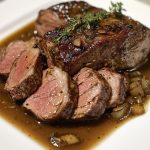ADVERTISEMENT
How Plants Attract Butterflies
Plants attract butterflies primarily through their flowers, which provide nectar, a vital food source for adult butterflies. The color, shape, and scent of flowers can all influence a butterfly’s choice. Brightly colored flowers, especially those in shades of red, yellow, and purple, are particularly attractive to butterflies. Additionally, some plants serve as host plants for butterfly larvae, providing a place for butterflies to lay their eggs and for caterpillars to feed and grow.
1. Butterfly Bush: A Nectar-Rich Haven
The butterfly bush (Buddleja davidii) is renowned for its ability to attract butterflies with its long, cone-shaped clusters of fragrant flowers. Blooming from summer to fall, it offers a continuous supply of nectar. Its flowers come in a variety of colors, including purple, pink, white, and yellow, making it a versatile choice for any garden. The butterfly bush thrives in full sun and well-drained soil, and its vigorous growth makes it a standout feature in any landscape.
2. Marigold: Bright Blooms and Butterfly Appeal
Marigolds (Tagetes spp.) are popular annuals known for their bright, cheerful blooms in shades of orange, yellow, and red. These flowers are easy to grow and maintain, making them an excellent choice for novice gardeners. Marigolds attract butterflies with their vibrant colors and abundant nectar. They also have the added benefit of repelling certain garden pests, making them a practical addition to any butterfly garden.
3. Coneflower: A Perennial Favorite
Coneflowers (Echinacea spp.) are hardy perennials that are beloved by butterflies and gardeners alike. Their large, daisy-like flowers with prominent central cones provide an excellent landing platform for butterflies. Coneflowers bloom from midsummer to fall and are available in a range of colors, including purple, pink, and white. They are drought-tolerant and thrive in full sun, making them a low-maintenance choice for attracting butterflies.
4. Zinnia: A Burst of Color and Nectar
Zinnias (Zinnia elegans) are annuals that offer a dazzling array of colors, from bold reds and oranges to soft pinks and purples. Their open, flat blooms are perfect for butterflies to land on and feed from. Zinnias bloom profusely throughout the summer and into the fall, providing a continuous source of nectar. They are easy to grow from seed and thrive in sunny locations with well-drained soil.
5. Milkweed: Essential for Monarchs
Milkweed (Asclepias spp.) is a critical plant for the survival of monarch butterflies, as it serves as the sole host plant for monarch caterpillars. Female monarchs lay their eggs on milkweed, and the emerging caterpillars feed on its leaves. In addition to supporting monarchs, milkweed flowers provide nectar for a variety of butterfly species. Milkweed is available in several species, including common milkweed, swamp milkweed, and butterfly weed, each suited to different growing conditions.
6. Lantana: Vibrant Clusters and Butterfly Magnet
Lantana (Lantana camara) is a tropical plant known for its clusters of small, brightly colored flowers that attract a wide range of butterflies. The flowers change color as they age, adding visual interest to the garden. Lantana is a hardy plant that thrives in hot, sunny conditions and is drought-tolerant once established. Its long blooming period from spring to fall ensures a steady supply of nectar for visiting butterflies.
7. Aster: Late Season Blooms for Butterflies
Asters (Symphyotrichum spp.) are late-blooming perennials that provide essential nectar for butterflies as they prepare for migration or overwintering. Their star-shaped flowers come in shades of purple, blue, pink, and white, adding a splash of color to the fall garden. Asters prefer full sun to partial shade and well-drained soil. They are an important addition to any butterfly garden, extending the season of interest and providing food when other sources are scarce.
8. Verbena: Long-Lasting Blooms and Nectar
Verbena (Verbena spp.) is a versatile plant that produces clusters of small, tubular flowers in a variety of colors, including purple, pink, and red. Its long-lasting blooms provide a continuous source of nectar from spring through fall. Verbena is drought-tolerant and thrives in full sun, making it an ideal choice for hot, dry climates. Its low-growing habit makes it suitable for borders, containers, and ground covers.
9. Lavender: Fragrant and Butterfly-Friendly
Lavender (Lavandula spp.) is a fragrant herb that attracts butterflies with its spikes of purple flowers. In addition to its beauty and fragrance, lavender is valued for its drought tolerance and ability to thrive in poor soils. It prefers full sun and well-drained conditions. Lavender’s long blooming period and aromatic foliage make it a delightful addition to any butterfly garden, providing both nectar and a sensory experience for gardeners.
10. Phlox: A Sweet-Scented Attraction
Phlox (Phlox spp.) is a perennial known for its sweetly scented flowers that attract butterflies and other pollinators. Available in a range of colors, including pink, white, red, and purple, phlox blooms from spring to summer. It thrives in full sun to partial shade and prefers moist, well-drained soil. Phlox’s dense clusters of flowers provide an excellent landing platform for butterflies, making it a popular choice for butterfly gardens.
11. Salvia: A Nectar Source for Many Species
Salvia (Salvia spp.) is a diverse genus that includes both annuals and perennials, all of which are known for their tubular flowers that are rich in nectar. Salvia blooms in a variety of colors, including blue, purple, red, and pink, attracting a wide range of butterfly species. It thrives in full sun and well-drained soil, and its drought tolerance makes it a resilient choice for gardens. Salvia’s long blooming period ensures a steady supply of nectar throughout the growing season.
12. Joe-Pye Weed: Tall and Attractive
Joe-Pye weed (Eutrochium spp.) is a tall perennial that produces large clusters of pink or purple flowers in late summer and fall. Its height and showy blooms make it a striking addition to the back of a border or a wildflower garden. Joe-Pye weed thrives in moist, well-drained soil and full sun to partial shade. Its late-season blooms provide an important nectar source for butterflies preparing for migration.
13. Black-Eyed Susan: A Classic Choice
Black-eyed Susan (Rudbeckia hirta) is a classic American wildflower known for its bright yellow petals and dark central cone. This hardy perennial blooms from summer to fall, providing a reliable source of nectar for butterflies. Black-eyed Susans are easy to grow and thrive in full sun and well-drained soil. Their cheerful blooms and low maintenance make them a popular choice for butterfly gardens and naturalized areas.
Tips for Creating a Butterfly-Friendly Garden
To create a butterfly-friendly garden, start by selecting a variety of plants that offer nectar and serve as host plants for caterpillars. Plant in clusters to make it easier for butterflies to find your garden. Provide a sunny, sheltered location, as butterflies need warmth to fly and feed. Include flat stones or other surfaces where butterflies can bask in the sun. Avoid using pesticides, as they can harm butterflies and other beneficial insects. Finally, provide a shallow water source, such as a birdbath with stones for perching, to keep butterflies hydrated.
Conclusion: Enjoying the Beauty of Butterflies
By planting a diverse selection of butterfly-attracting plants, you can create a vibrant and lively garden that supports these important pollinators. Watching butterflies flit from flower to flower is a rewarding experience that connects us to the natural world. A butterfly garden not only enhances the beauty of your outdoor space but also contributes to the conservation of these enchanting creatures. With a little planning and care, you can enjoy the beauty and benefits of butterflies in your garden for years to come.


